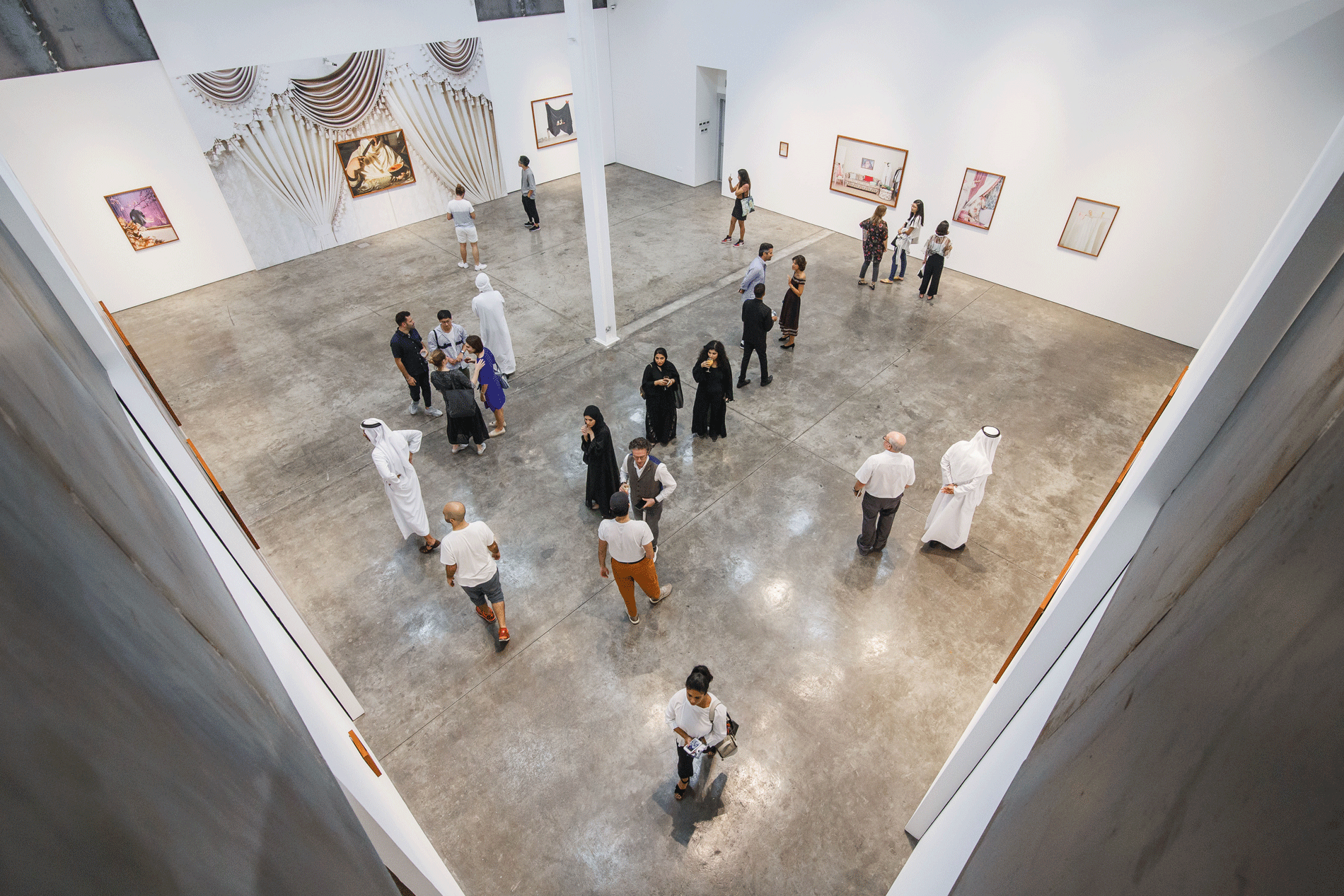As a stranger in the city, I find it hard to imagine any form of bohemia could flourish in a polished world of stiff high-rises. Marwan Shakarchi, a street artist who goes by the moniker Myneandyours, disagrees. He grew up in London and moved to Dubai eight years ago, believing “there was an opportunity over here to become part of a culture that hadn’t actually started yet”. His signature fluffy clouds now float across walls, rooftops and—most recently—a spinning globe in the lobby of 25hours.
“When I came out here, it was tough,” he admits during our visit to one of his best-known works in the Dubai Design District (known as D3). “But it was really about me educating myself and others to the importance of public art; creating a dialogue, stimulating curiosity.”
The mural The Greatest of Mysteries was — like the majority of murals in highly regulated Dubai — commissioned by a corporate company. Taking up 18 walls of the entrance to a multi-storey car park, it depicted a psychedelic solar system, an immersive, 360-degree piece featuring 50,000 stars and 560 clouds on pipes, pillars and ceilings. Unlike anything people had seen before, it attracted thousands of spectators every day and led to a second commission with an even more powerful theme 12 months later.
“On one side of the car park was man’s destruction of the ocean,” says Marwan, describing We Breathe The Sea, also located in D3. “The other side was the response of marine life. The message was: destroy the ocean and the ocean will destroy you.”
Although most major works are governed by big business investment, Marwan insists there’s still freedom for subtle subversion—surely the tenet underpinning authentic street art.
“These pieces are still shocking to see, which is important,” he says.
A community of creative spirits
Encouraging experimentation and boundary-busting ideas, Alserkal Avenue in the Al Quoz neighborhood has become Dubai’s nerve center for creative thought. A former marble factory converted into galleries, cafes, designer boutiques and an arts cinema, it’s also the place to meet local artists and tap into Dubai’s alternative social scene. Founded in 2008 by businessman and patron Abdelmonem Bin Eisa Alserkal, it’s the Emirati equivalent of London’s Shoreditch — without the grit and grime.
I wander through a courtyard, beneath neon signs asking, ‘When did you arrive’, ‘When will you return’ — two of the most common questions in the city where outsiders come and go. In clothes store CHI-KA, I browse rails of robes fusing the flowing designs of Arabic abayas and Japanese kimonos; I sneak a peak into the open-door gallery of calligraphic artist eL Seed; and I refuel with an umami-rich Hojicha latte and matcha Danish pastry at new tea and bread bar, Pekoe.
From purchasing paintings to sampling unusual brews, every venue invites visitors to try something new. At Cinema Akil, Butheina Kazim programs a mixture of art house movies, documentaries and blockbusters to “broaden horizons through moving images”.
Despite meeting a growing demand from the community, the eloquent Bahraini-born writer and filmmaker believes there’s still a lot of work to be done in developing an industry for Indigenous storytelling and confronting difficult topics — a point illustrated by the reaction to her most controversial screening Leaving Neverland: Michael Jackson and Me.
“We were trolled from the UK,” she says, when I join her in the 133-person backroom auditorium filled with flock velvet sofas and vintage flip-up seats. “But we kept going with three sittings.”
.

